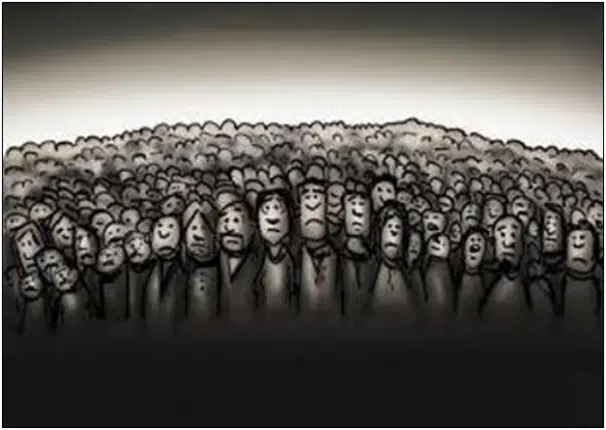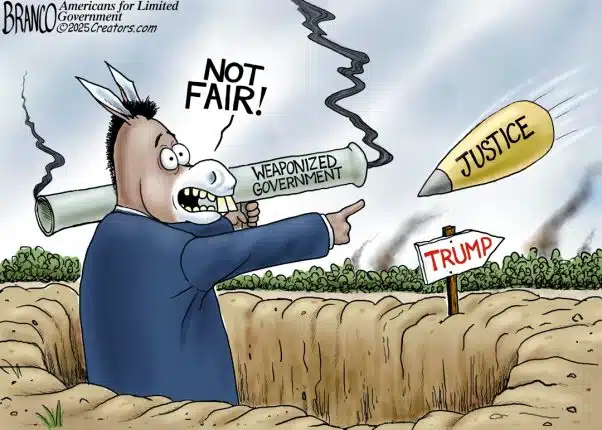By Robert Romano — One issue certain to come up at the Oct. 11 vice-presidential debate between Paul Ryan and Joe Biden will be the sorry state of the nation’s finances, with a national debt of $16.161 trillion and rising.
For Ryan, this presents a unique opportunity to explain just how dire our collective predicament really is.
But one question both candidates should have to answer is whether the national debt ever needs to be repaid.
What if the debt was like a mortgage that must be paid down every month? What would our payment plan look like? Could we even afford to pay the debt back? Would we face foreclosure?
If we start paying off the national debt today at the current average interest rate of about 3 percent over 30 years, it would cost $817 billion in principal and interest a year out of $2.3 trillion of revenue — a debt to service ratio of about 35 percent.
On the surface, that seems okay. There is in fact sufficient revenue to pay off the debt on time and in full if we had to. Not impossible.
But to get there, the budget would have to be balanced with an additional $1.2 trillion of borrowing cut. For all intents and purposes, to begin repaying the debt, we’d have to cut $2 trillion out of the existing $3.7 trillion budget right away — a 54 percent cut from current levels.
That would leave only about $1.7 trillion left over to be spent on government. To put that into perspective, that is less than the current budgets for Social Security, Medicare, and defense combined. There would be no money left over for anything else, and even then each of the aforementioned categories of spending would face additional cuts totaling 13 percent. Keep that cut in mind.
The situation looks even graver if we wait ten years to begin repayment. But it becomes cataclysmic if the White House’s rosy economic projections of 3 percent real growth of the Gross Domestic Product (GDP) over the next decade do not come true.
With growth only at a 1.3 percent pace right now instead of 3 percent, it appears likely that the revenue projections by the White House averaging $3.8 trillion a year this decade will almost certainly be wrong.
If revenues only average, say, $3 trillion a year instead, and spending stays on its current path, the national debt will total $34 trillion instead of the projected $26 trillion by 2022.
The budget by then will total more than $6 trillion, with the deficit itself rising to $2.5 trillion. Revenues using the above assumptions would increase to about $3.5 trillion.
If we started repayment at that point, principal and interest owed on the debt would rise to $1.7 trillion assuming interest rates hold steady. By then our debt to service ratio could be as high as 48 percent, well above what any responsible lender would allow in real life to an individual.
In short, under our current trajectory, very soon we would not even qualify for a mortgage.
But even worse, if we began making payments starting in 2022, $4.2 trillion would have to be cut out of the $6 trillion budget — cuts totaling 69 percent. There would only be $1.8 trillion left over to spend on government.
By then Social Security, Medicare, and defense will total $3.1 trillion. Each of those programs would face an additional 41 percent cuts at that point, assuming the rest of the budget were completely axed.
You do the math. Do those sound like cuts anybody in Washington, D.C. — or anywhere else — would be willing to accept?
Fortunately, as long as we have willing creditors, we do not necessarily need to fully begin paying down the debt right away.
But be warned. The longer we wait to begin repayment, the more likely doing so will ultimately become impossible.
The moment of crisis in the future — when our creditors say enough is enough and we have a Greek-style funding crisis — is unknown. At that stage, if the debt is so large it could never be paid down and still have a functional government through the process, default will be the only option left on the table.
So, clearly it is time for some truth-telling from our elected leaders such as Ryan and Biden.
Because 2012 may be our last chance to address this problem — if it is not already too late.
Robert Romano is the Senior Editor of Americans for Limited Government.







